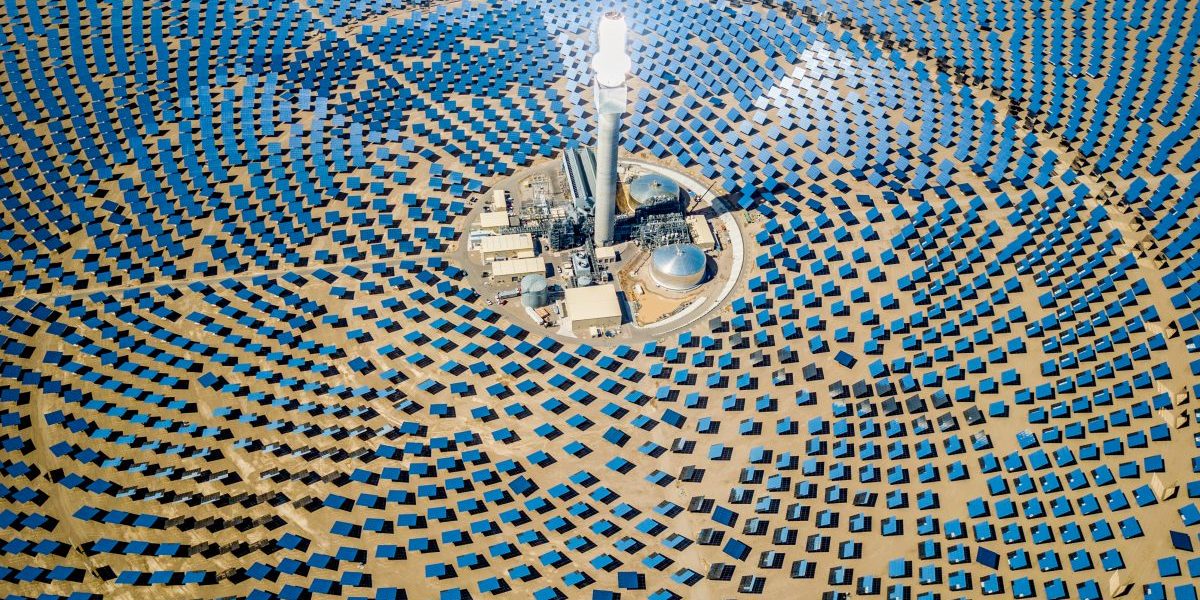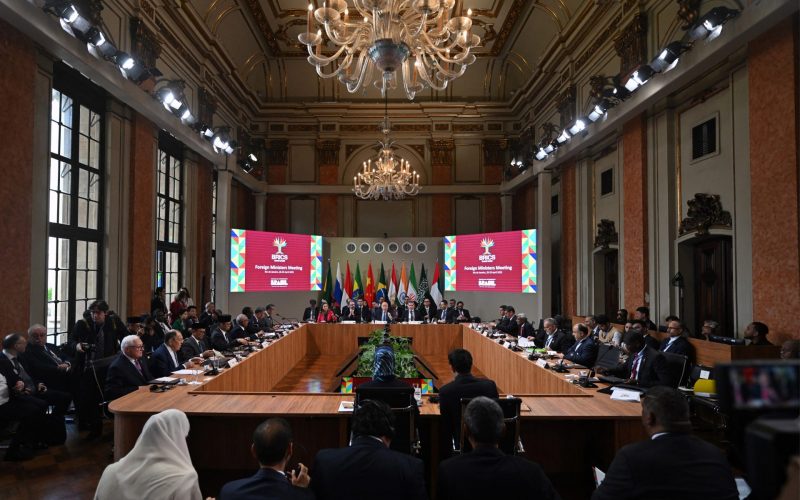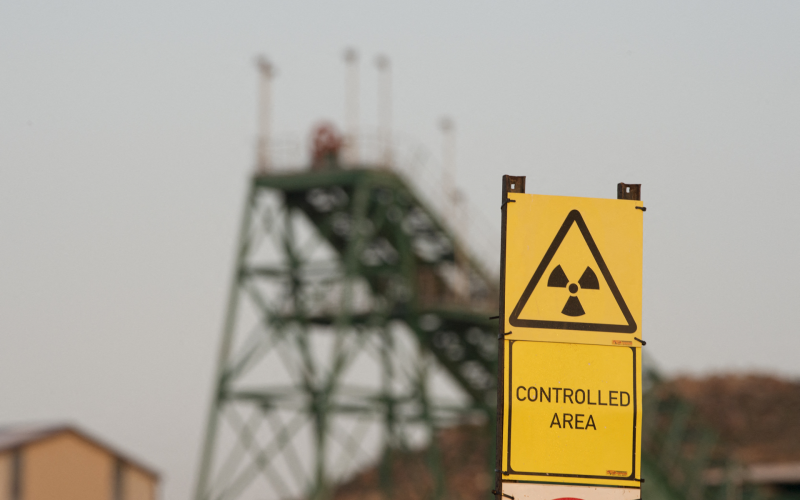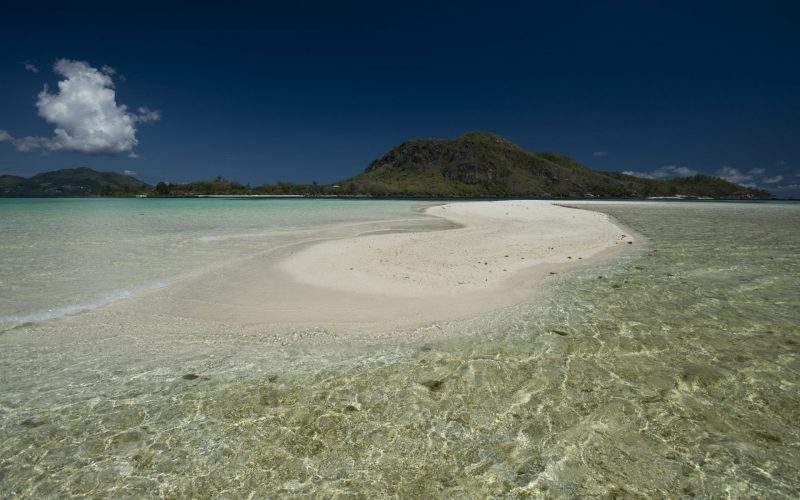Recommendations
- Incentivise exploration investment into minerals and metals that will feed the global transition to a low-carbon future.
- Build a comprehensive green industrialisation strategy that drives structural transformation away from coal dependence and towards renewable energy; this should connect mining to upstream, sidestream and downstream opportunities associated with products of the Fourth Industrial Revolution (4IR), such as the electric vehicle.
- Decouple economic growth from environmental degradation by incentivising minimally invasive automated mining and abandoning fossil fuel extraction and investment altogether.
- Ensure that political and economic barriers to the adoption of a circular economy are adequately addressed in the process of formulating a green industrialisation strategy; this would entail, among others, strategic re-skilling and incentivising recycling.
Executive Summary
Mining is not typically associated with visions of a circular economy, where waste is transformed into inputs for ecologically safe outputs. But if the world is to transition to a low-carbon future – a fundamental imperative if we are to avoid warming the planet more than 1.5°C higher than pre-industrial temperatures – more minerals and metals will be required, not less. The future is renewable energy, robots and electric vehicles. This shift will require vast volumes of copper, lithium, cobalt, platinum, chrome and manganese. This policy briefing details the opportunities associated with the Fourth Industrial Revolution (4IR) in South Africa, and the role that mining can play as the world transitions to a low-carbon circular economy.
Introduction
We are living in what atmospheric chemist and Nobel laureate Paul Crutzen termed the ‘Anthropocene’ – an age of human-induced mass extinctions of plant and animal species, polluted oceans and an altered atmosphere.[1] The latest report by the Intergovernmental Panel on Climate Change [2] warns that if the planet warms by 2°C, instead of 1.5°C, above pre-industrial levels, tens of millions more people are likely to be exposed to life- threatening heatwaves, water shortages and coastal flooding. As the New York Times put it, ‘half a degree may mean the difference between a world with coral reefs and Arctic summer sea ice and a world without them’.[3] This scenario can sound abstract, and it remains relatively easy for consumers and producers to treat catastrophic climate change as something that somebody else – future generations – should deal with. The same applies to the language of planetary boundaries: these terms can sound cold and distant while failing to impress on us the importance of sustaining our living planet. The inconvenient truth is that the most ‘fundamental impact we have on our environment comes from our prodigious fossil fuel consumption and the increasing levels of carbon dioxide in the atmosphere’,[4] along with our meat-laden diets.[5] A resultant difficult irony is that any move towards a low-carbon future will require vast volumes of minerals and metals. This policy briefing analyses the role of mining in this future and how it can be done in a manner that coheres with the Sustainable Development Goals (SDGs).[6]
SDGs and a circular or doughnut economy
The SDGs provide a roadmap for how the world might move towards a low-carbon future. Given the risks of overstepping a number of inter-connected planetary boundaries, and the irreversible environmental consequences thereof, the necessity of transitioning towards a circular or doughnut economy could not be more urgent.[7] A circular economy ‘is one in which waste from one process becomes an input into other processes’.[8] Kate Raworth’s idea of a doughnut economy, similarly, is to flip conventional economic growth models upside down – to move from wasteful and extractive by default to regenerative by design.[9] The doughnut suggests a safe and just space within the inner circle in which we can sustainably live. In the circular or doughnut economy, the opportunity for developing countries to leapfrog over traditional industrialisation trajectories is a key strategic consideration.[10] Most African countries’ urban and energy infrastructure has not yet been built, which means that costly investments in centralised energy, for instance, can be avoided.[11]
Premature deindustrialisation, mining and the Fourth Industrial Revolution
African countries face a double-edged development challenge. First, their economies are de-industrialising – moving out of manufacturing into services – sooner, and at lower levels of per capita income, than their developed counterparts did.[12] This is exacerbating youth unemployment, as the labour force would traditionally have been absorbed by manufacturing growth. Second, although these economies are not locked into a resource- intensive growth path, the risk is that they might fail to take advantage of economic opportunities associated with the advance of new technology and therefore fall even further behind in terms of development.[13] The benefits of technology tend to be uneven and typically accrue disproportionately to those already connected. Unless workable strategies are implemented to ensure broader distribution of benefit, Africa’s youth bulge – often seen as a demographic dividend – may turn into a demographic curse, with even higher levels of youth unemployment than at present.[14]
What are these economic opportunities? One is mining connected to green industrialisation, which integrates the extraction of raw materials with new global value chains.[15] This entails using the continent’s natural resources to fuel the 4IR, defined as the cumulative impact of a range of interconnected new technologies.[16] The 4IR is distinguished from the third – or digital – revolution by the scale and ubiquity of recent advances. Almost all major global organisations view the 4IR as a significant trend.[17] At the forefront of the 4IR are the energy and transport revolutions, ie, renewable energy (wind and solar) at scale, robotics, electric vehicles, platinum fuel cells, energy storage technology and so forth.
Using the products derived from technological advances also creates opportunities to mine in less environmentally destructive ways. The World Bank, in considering the material input requirements for new products such as solar panels and electric vehicles, estimates that the world will require roughly double the volume of mined minerals and metals than are currently produced.[18] It further notes that ‘the shift to low carbon energy will produce global opportunities with respect to a number of minerals … Africa, with its reserves in platinum, manganese, bauxite, and chromium, should also serve as a burgeoning market for these resources.’[19]
However, this extraction should not compromise, but rather complement, the preservation of wilderness landscapes. Intact terrestrial areas provide a vast range of ecosystem services that enhance human wellbeing.[20]
The 4IR means that the minerals and metals required to move the globe towards a circular economy can be extracted in less environmentally destructive ways. At the same time, some minerals (such as coal) and hydrocarbons should be left in the ground. This is largely because the negative environmental and health impacts of mining coal, for instance, are no longer warranted against the backdrop of rapid improvements in the effectiveness of other sources of power.[21] The rest of this briefing explores these trade-offs and suggests optimal policy directions for the future, using South Africa as a case study.
Green mining and disruption to the current equilibrium
Achieving a circular economy is not possible without mining, and mining is unlikely to become entirely green. Even open-cast copper mining, which is relatively clean compared to coal, entails strip-mining large quantities of copper-bearing rock from the earth’s surface. Minimally invasive underground mining is not yet viable, although it may increasingly become so. Non-invasive mineral exploration technologies are being piloted in Germany, Finland and Spain. [22] Above-stock supplies of minerals and metals such as copper, lithium, cobalt, manganese, chromium, etc. are insufficient to be recycled for producing solar panels, robots, drones, batteries, wind turbines, smart phones and electric vehicles – the products of the future.
This is good news for South Africa, as it currently mines at least five of the 16 minerals or metals used to produce solar panels, namely iron ore, lead, phosphate rock, silica and titanium oxide. Similarly, it has substantial chrome and manganese deposits, critical ingredients for both geared and direct drive wind turbines. This creates extensive value chain opportunities for South Africa to use its mineral and metal endowments to structurally transform its economy.[23] In so doing, it would meet some of the aspirations of the Africa Mining Vision and the country’s own National Development Plan. Downstream of mining itself, South Africa could produce components of the fuel cell value chain or essential parts for solar photovoltaic panels and wind turbines. Upstream, manufacturers of mining equipment could develop technologies that both increase mining production efficiency and can be used in other industries. The technological spillover effects could even create other industries, which would be a ‘sidestream’ link to the mining industry.[24] Finland provides a useful example, in that its abundant forests did not necessarily make it a world leader in furniture production. Instead, innovations to improve tree-cutting efficiency led it to produce new technologies such as automated machinery, which eventually resulted in Nokia.[25]
New technologies afford efficiency gains in the mining industry itself. Remote sensors on autonomous aerial vehicles, for instance, can detect geothermal activity on the exploration front, directing drilling and sampling to those areas where there is strong indication of an extractable resource. In production, robots rather than people can work in hazardous environments. Artificial intelligence and machine learning mean that rock can now be cut instead of blasted, leading to continuous mining. Automated rock-face mapping can be built into cutting machinery, along with material characterisation and fragmentation analysis. Beyond extraction, crushing technology is becoming nimbler, rendering obsolete the need for massive crushers. The first entirely automated mine in the world has already been developed – the Kankberg gold mine in Sweden.[26] In South Africa, work is apace to invest in the research and development necessary to pioneer smart mines.[27]
The benefits of technological innovation, from an environmental and health and safety perspective, are obvious. However, benefits are unevenly distributed, and the disruption threatens both vested interests and mining’s current political economy equilibrium. Nowhere is this more obvious than in the coal industry. South Africa’s economic edifice was essentially established on the minerals-industrial complex – extensive coal deposits fuelled coal-fired power stations, which in turn provided the baseload power required by a burgeoning mining and manufacturing industry. Now, if catastrophic climate change is to be avoided, a third of global oil reserves, half the gas reserves and more than 80% of known coal reserves must be left in the ground.[28]
Coal currently provides approximately 90% of South Africa’s electricity. But the Renewable Energy Independent Power Producer Programme (REIPPP) has procured wind and solar power at far lower per kilowatt hour costs than new coal-fired power.[29] These costs are declining exponentially as solar comes onstream at scale and energy storage challenges are addressed. Nonetheless, coal remains a significant component of the South African economy. It accounted for the largest sales value per sector within the mining industry and employed 86 919 people in 2018, with total employee earnings of ZAR[30] 24.7 billion ($1.73 billion).[31]
However, the risk of stranded assets is high.[32] By the end of 2016, fossil fuel subsidies in over 50 countries had been reformed, indicating a long-term trend away from fossil fuels. Escalating financial divestment in light of coal’s ecological impact heightens the stranded asset risk. Mitigating the imperative to leave coal in the ground is the sunk cost fallacy – continuing to invest in a project simply because capital has been sunk into it, not because it is financially viable in the long run. Medupi and Kusile are prime examples in this respect, in that electricity from these mega coal plants will cost in the region of between 105c/kWh ($0.073/kWh) and 119c/kWh ($0.083/kWh) when they finally come onstream, presumably by the end of 2019. This is nearly double the respective set of prices for wind (62c/kWh or $0.043/kWh) and solar (79c/kWh or $0.055/kWh) in the latest REIPPP bidding round.[33] When considered against a model built by the Centre for Scientific and Industrial Research, which shows that South Africa could reliably be powered through a strategic combination of wind and solar power (with occasional supplementation from open cycle gas turbines),[34] it does not make economic sense to continue investing in coal mining or coal-fired electricity generation.
Policy solutions to technological disruption
The prospect of job losses through decommissioning and ultimately abandoning fossil fuels in the South African context is politically and economically painful. Moreover, even in other mining growth sectors the rates of labour absorption are going to decline. Mining will not be a major direct employer in the future because of mechanisation and digitalisation. At best, it will generate employment opportunities in connected sectors. Although mining is not unique in respect of job disruptions, it is particularly important in the South African context because it remains such a large direct employer (453 543 people in 2018) in a context of high unemployment.
The World Economic Forum estimates that 75 million jobs will be displaced in 20 major economies by 2022. However, it also notes that technological advances may create 133 million new roles. In South Africa, 41% of all work activities are susceptible to automation, and 39% of the core skills required across occupations will be entirely different by 2020.[35] Reskilling initiatives are therefore critical to avoiding social upheaval and sustained economic disruption.[36] In mining, this would mean using the profits associated with higher margins – gained from employing new technologies – to train lower-skilled workers with information technology skills to work with artificial intelligence and machine learning, for instance, enabling them to step into new roles.
South African President Cyril Ramaphosa is taking these issues seriously and will chair a 4IR commission that will recommend policies, strategies and plans to position South Africa as a competitive player in a rapidly changing world.[37] He will face challenges. A new report considers a scenario, for instance, in which the labour movement rejects anything associated with the 4IR if potential job losses are perceived. This must be avoided if the country is to avoid further deterioration of its social fabric. In other words, we need to ensure a scenario characterised by ‘empowered people with appropriate skills’.[38] Ramaphosa and his team, including the acclaimed Prof. Tshilidzi Marwala,[39] have their work cut out to ensure broad-based access to quality education and infrastructure that equip South Africans to be game-changers instead of laggards.
South Africa’s future does indeed require a coherent ‘green industrialisation’ strategy [40] that will govern the transition away from fossil fuel dependence and towards a low-carbon, automated future responsibly and sustainably.
Footnotes
[1] Stromberg J, ‘What is the Anthropocene and are we in it?’, Smithsonian, January 2013, https://www.smithsonianmag.com/science -nature/what-is-the-anthropocene-and-are-we-in-it-164801414/, accessed 15 April 2019. Also see Grooten M & REA Almond (eds), Living Planet Report – 2018: Aiming Higher, WWF (World Wide Fund for Nature), 2018, https://c402277.ssl.cf1.rackcdn.com/publica tions/1187/files/original/LPR2018_Full_Report_Spreads.pdf?1540487589, accessed 15 April 2019.
[2] IPCC (Intergovernmental Panel on Climate Change), ‘Special Report: Global Warming of 1.5° C’, https://www.ipcc.ch/sr15/, accessed 12 April 2019.
[3]Plumer B & N Popovich, ‘Why half a degree of global warming is a big deal’, New York Times, 7 October 2018, https://www.nytimes. com/interactive/2018/10/07/climate/ipcc-report-half-degree.html, accessed 12 April 2019.
[4]Acemoglu D, ‘The World Our Grandchildren Will Inherit: The Rights Revolution and Beyond’, MIT (Massachusetts Institute of Technology) Economics, 6 April 2012, https://economics.mit.edu/files/10396, accessed 19 April 2019.
[5] See Simon DR, Meatonomics. San Francisco: Conari Press, 2013.
[6] Sustainable Development Goals Knowledge Platform, ‘Sustainable Development Goals’, https://sustainabledevelopment. un.org/?menu=1300, accessed 12 April 2019.
[7] Mostert H & C Young, ‘From Promise to Practice: South Africa’s Legal Framework for Mineral Resources and the Sustainable Development Goals’, Occasional Paper 279. Johannesburg: SAIIA (South African Institute of International Affairs), 2018.
[8] Preston F & J Lehne, ‘A wider circle? The circular economy in developing countries’, Chatham House Briefing, December 2017, https://www.chathamhouse.org/sites/default/files/publications/research/2017-12-05-circular-economy-preston-lehne-final.pdf, accessed 12 April 2019.
[9] Raworth K, Doughnut Economics: Seven Ways to Think Like a 21st Century Economist. Hartford: Chelsea Green Publishing, 2017.
[10] The Economist, ‘Special Report: Technology in Africa’, 10 November 2017, https://www.economist.com/special-report/2017/11/10/ what-technology-can-do-for-africa, accessed 15 April 2019.
[11] See Harvey R, ‘Damned If You Dam: Tanzania’s Energy Dilemmas’, Occasional Paper 281. Johannesburg: SAIIA, 2018a.
[12] Rodrik D, ‘Premature deindustrialization’, Journal of Economic Growth, 21, 1, 2015, pp. 1–33.
[13] Harvey R, ‘The Fourth Industrial Revolution: Potential and risks for Africa’, The Conversation, 30 March 2017, https://theconversation. com/the-fourth-industrial-revolution-potential-and-risks-for-africa-75313, accessed 15 April 2019.
[14] NEPAD (New Partnership for Africa’s Development), ‘Africa’s Path to 2063: Choice in the Face of Great Transformation’, https://www.nepad.org/publication/africas-path-2063-choice-face-great-transformation, accessed 17 April 2019.
[15] Altenburg T & D Rodrik, ‘Green industrial policy: Accelerating structural change towards wealthy green economies’, in Altenburg T & C Assmann (eds), Green Industrial Policy: Concept, Policies, Country Experiences. Geneva: German Development Institute and Partnership for Action on Green Economy, 2017.
[16] Schwab K, The Fourth Industrial Revolution. Geneva: WEF (World Economic Forum), 2016.
[17] WEF, ‘Fourth Industrial Revolution’, https://www.weforum.org/agenda/archive/fourth-industrial-revolution, accessed 17 April 2019.
[18] World Bank Group, ‘The Growing Role of Minerals and Metals for a Low Carbon Future’, June 2017, http://documents.worldbank. org/curated/en/207371500386458722/pdf/117581-WP-P159838-PUBLIC-ClimateSmartMiningJuly.pdf, accessed 15 April 2019.
[19] Ibid., p. xiii.
[20] See Wilson EO, Half-Earth: Our Planet’s Fight for Life,. New York: Liveright Publishing, 2017.
[21] For an overview of the issues at stake, see Harvey R, ‘Book review: Global Energy Dilemmas, by Michael Bradshaw’, LSE Review of Books, 11 February 2014, https://blogs.lse.ac.uk/lsereviewofbooks/2014/02/11/book-review-global-energy-dilemmas-by-michael- bradshaw/, accessed 17 April 2019; Harvey R, ‘Book review: The Silent Epidemic: Coal and the Hidden Threat to Health, by Alan Lockwood’, LSE Review of Books, 7 February 2013, https://blogs.lse.ac.uk/lsereviewofbooks/2013/02/07/book-review-the-silent- epidemic-coal-and-the-hidden-threat-to-health/, accessed 17 April 2019.
[22] For more information, see the INFACT project, ‘Innovative, non-invasive and fully acceptable exploration technologies’, https://www.infactproject.eu, accessed 17 April 2019. These are still orientated towards the exploration phase, but the mining process itself will receive the spillover benefits of these kinds of projects.
[23] Valiani S (ed.), The Future of Mining in South Africa: Sunset or Sunrise? Johannesburg: Mapungubwe Institute for Strategic Reflection, 2018.
[24] Harvey R, ‘Greening South African mining through the Fourth Industrial Revolution’, 2018b, in ibid., p. 170.
[25] Hausmann R, ‘The real raw material of wealth’, Social Europe, 31 July 2014, https://www.socialeurope.eu/raw-material, accessed 26 April 2019.
[26] Lempriere M, ‘The minerless mine: Ericsson’s Kankberg project is a glimpse into the future of automation’, Mining Technology, 24 September 2017, https://www.mining-technology.com/features/featurethe-minerless-mine-ericssons-kankberg-project-is-a- glimpse-into-the-future-of-automation-5925612/, accessed 16 October 2017.
[27] Minerals Council South Africa, ‘Minerals Council welcomes the launch of Mandela Mining Precinct and MEMSA’, Statement, 14 September 2018, https://www.polity.org.za/article/mc-minerals-council-welcomes-the-launch-of-mandela-mining-precinct-and- memsa-2018-09-14, accessed 26 April 2019.
[28] Altenburg T & D Rodrik, op. cit., p. 8.
[29] Eberhard A & R Naudé, ‘The South African Renewable Energy IPP Procurement Programme’, GSB (Graduate School of Business) Cape Town, 2017, https://www.gsb.uct.ac.za/files/EberhardNaude_REIPPPPReview_2017_1_1.pdf, accessed 1 August 2018.
[30] Currency code for the South African rand.
[31] Minerals Council of South Africa, ‘Facts and Figures Pocketbook 2018’, https://www.mineralscouncil.org.za/industry-news/ publications/facts-and-figures, accessed 15 April 2019.
[32] Matikainen S, ‘What are stranded assets?’, Grantham Research Institute on Climate Change and the Environment & London School of Economics, 23 January 2018, http://www.lse.ac.uk/GranthamInstitute/faqs/what-are-stranded-assets/, accessed 17 April 2019.
[33] Eberhard A & R Naudé, op. cit.
[34] Knorr K et al., ‘Wind and Solar PV Resource Aggregation Study for South Africa’. Pretoria: CSIR (Centre for Scientific and Industrial Research), 2016.
[35] Samans R & S Zahidi, ‘The Future of Jobs and Skills in Africa: Preparing the Region for the Fourth Industrial Revolution’, WEF Executive Briefing, May 2017, http://www3.weforum.org/docs/WEF_EGW_FOJ_Africa.pdf, accessed 17 April 2019.
[36] Brende B, ‘We need a reskilling revolution. Here’s how to make it happen’, WEF, 15 April 2019, https://www.weforum.org/agenda/ 2019/04/skills-jobs-investing-in-people-inclusive-growth/, accessed 17 April 2019.
[37] Phakathi B, ‘Cyril Ramaphosa to chair fourth industrial revolution commission’, BusinessDay, 9 April 2019, https://www.businesslive. co.za/bd/national/2019-04-09-cyril-ramaphosa-to-chair-fourth-industrial-revolution-commission/, accessed 17 April 2019.
[38] NEDLAC, ‘Futures of work in South Africa’, March 2019, http://nedlac.org.za/wp-content/uploads/2017/10/Futures-of-Work-in-South- Africa-Final-Report-March-2019.pdf, accessed 17 April 2019.
[39] See, for instance, Marwala T & E Hurwitz, Artificial Intelligence and Economic Theory: Skynet in the Market. Cham: Springer, 2018.
[40] For further details on what a green industrialisation strategy might look like, see Harvey R, 2018b, op. cit.
Acknowledgment
This briefing is in large part a reflection on a book chapter contributed by the author to ‘The Future of Mining in South Africa: Sunset or Sunrise’ (an edited volume by the Mapungubwe Institute for Strategic Reflection [MISTRA]).
This policy briefing is funded by SIDA. SAIIA graftully acknowledges this support.









